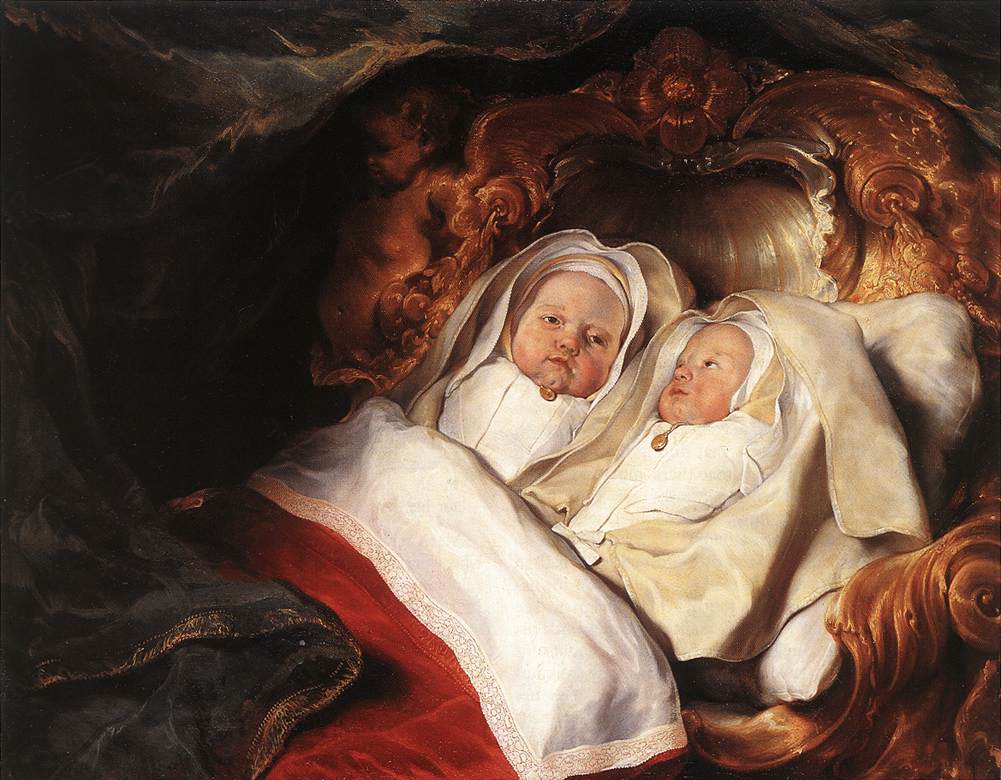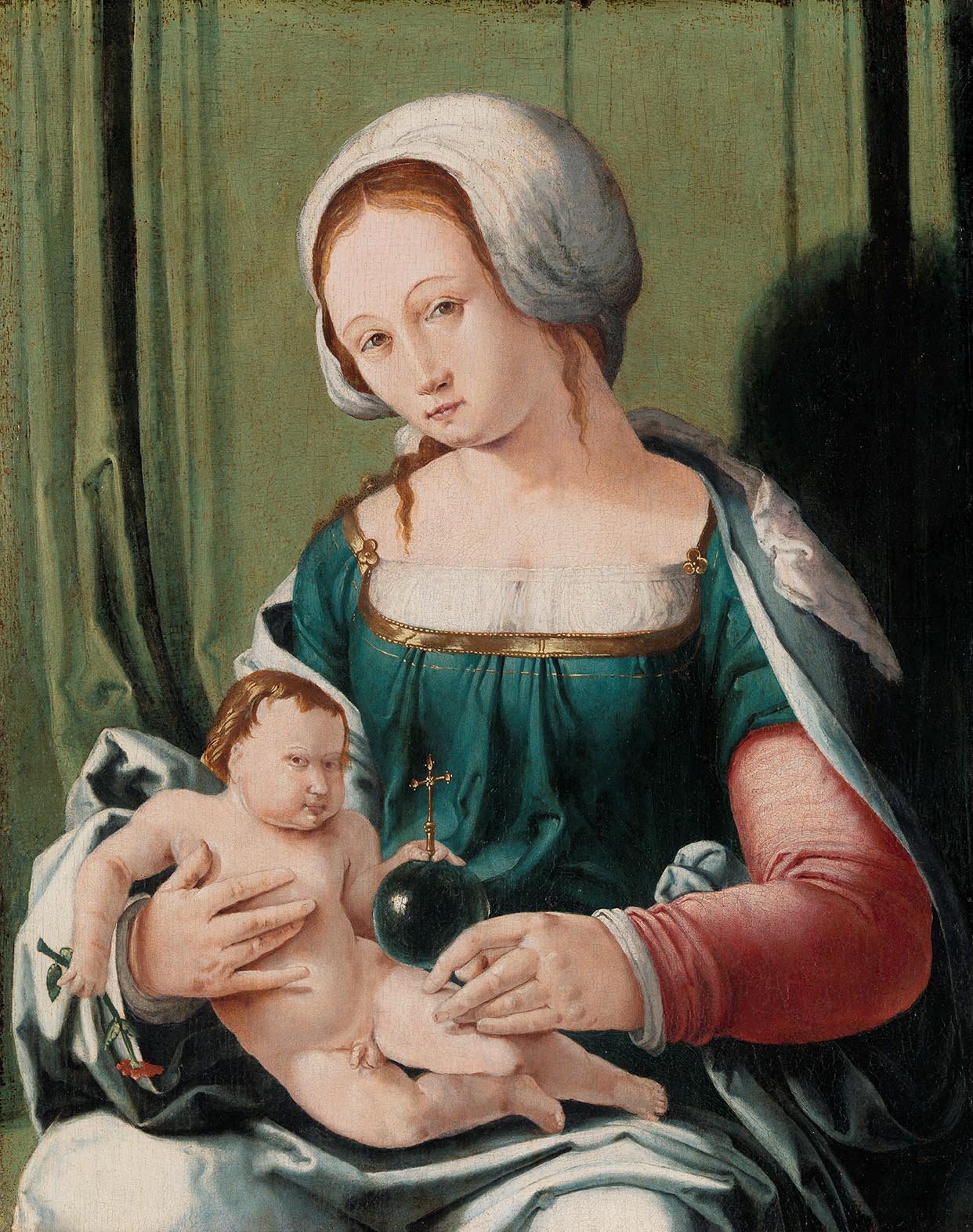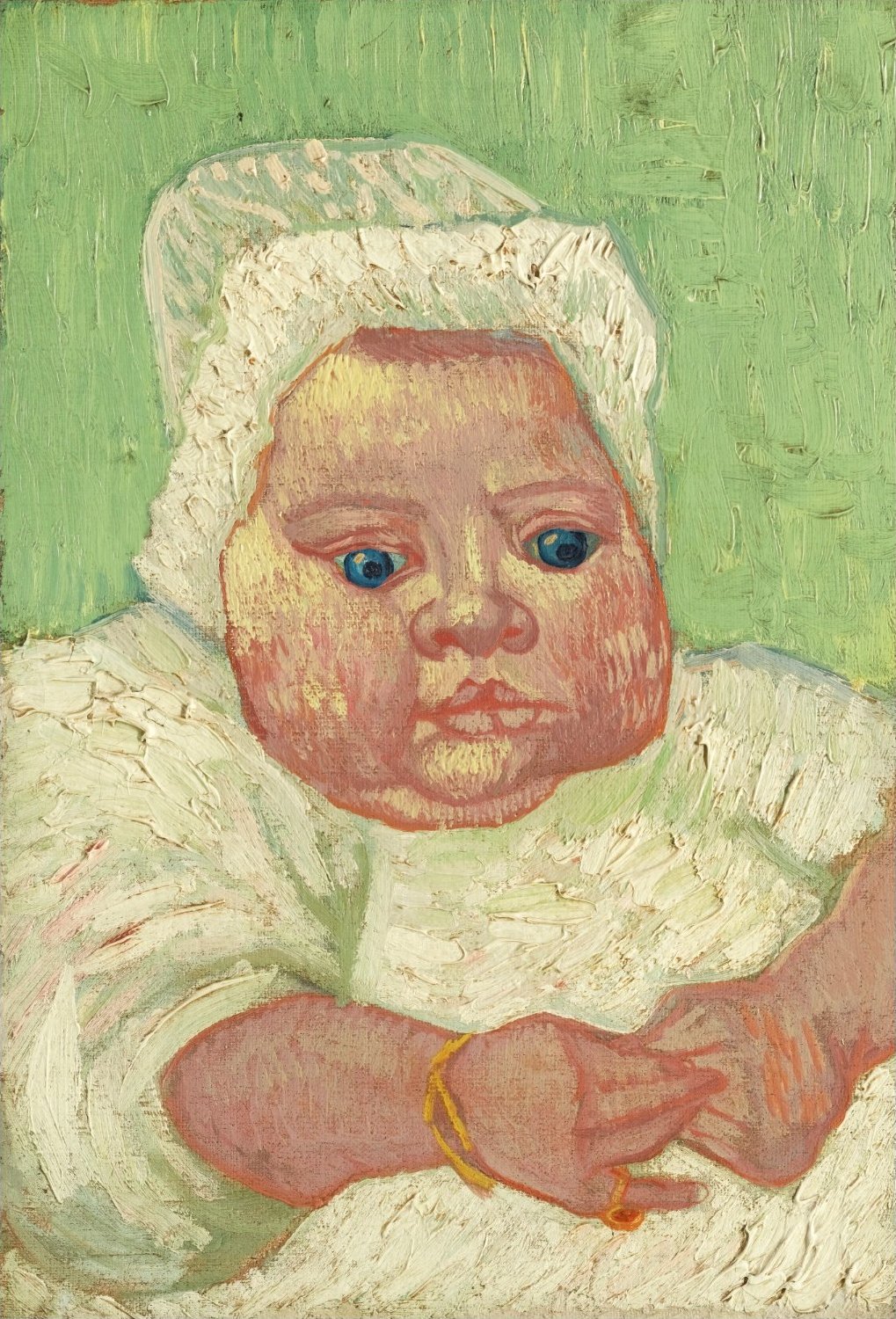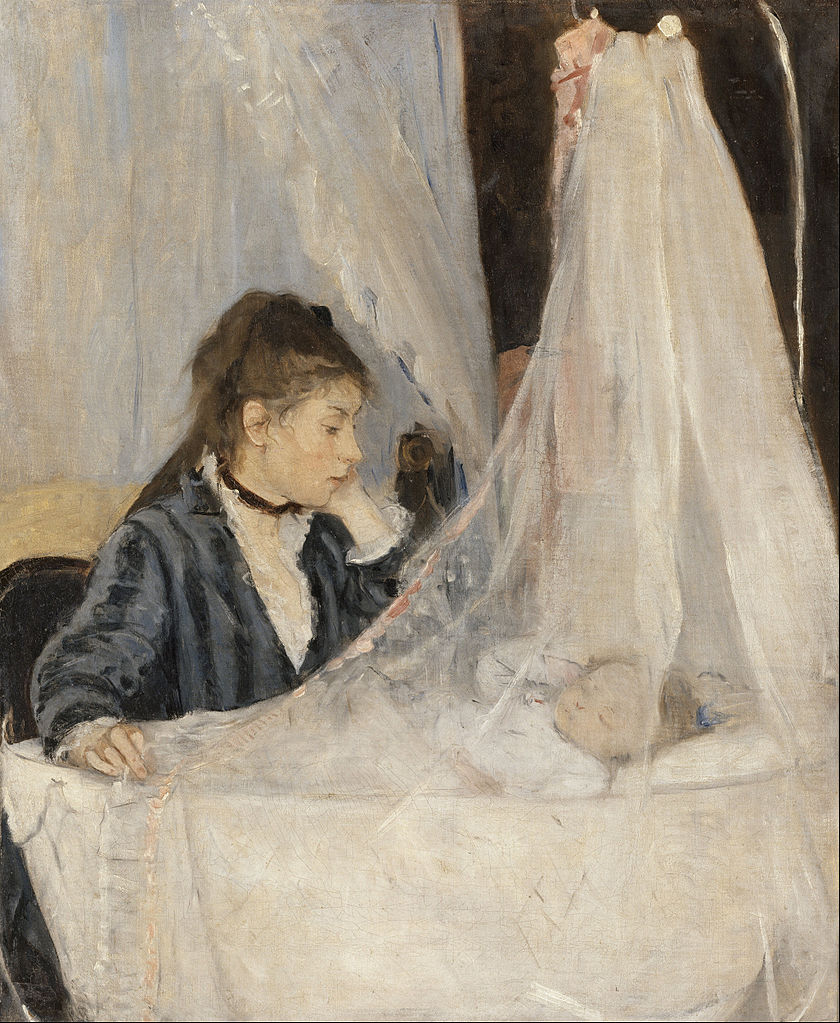
A few years ago, visiting Prague, I went to the Museum Kampa, the entrance of which is guarded by three giant bronzes of babies. They’re the work of David Černý, a provocateur who has a reputation as both a wit and an opportunist. A couple of miles away in another district, Žižkov, several more of these sculptures cling to the pillars of the transmitter tower (which was once declared the world’s second ugliest building), and each of the babies—miminka, to give them their Czech name—has a slot where you’d expect its facial features to be, surrounded by puckered puffiness, as if a barcode has been stamped into a boxing glove.
These miminka are the antithesis of sentimental images of newborns; they’re meant, I suppose, to tell us not about babies, but about the stunted emotions and inflated appetites of consumerism. Yet when I saw them for the first time I had a different reaction from the one Černý most likely intended, and thought about how often artistic representations of babies are actually quite ugly.

Recently, as a new father, I have had this on my mind. I wonder how other people would portray my daughter Athena, and I’m conscious that it might be in ways I’d find strange—manifesting an intensity of feeling very different from the one that I have. Immediately I can see Ron Mueck’s A Girl, acquired a few years ago by the Scottish National Gallery of Modern Art. As big as an adult hippopotamus, it’s a squashed and blood-smeared exercise in hyperrealism, evoking the trauma of birth. This is typical of Mueck, and in other works, such as Untitled (Baby), Mother and Child, and Swaddled Baby, he presents infancy in all its creased, crumpled, clammy detail.
His fascination with the body’s imperfections is shared by Jenny Saville, who pictures squirming babies mid-scream, and Patricia Piccinini, who invites questions about what we construe as physical (ab)normality with her sculptures of hybrid nurslings—some of whom have snouts, hairy backs and flappy Jar Jar Binks ears. For a different yet no less disturbing take on the sheer rawness of infancy there’s Marlene Dumas’s The First People: each of the babies in this quartet of canvases is an unwholesome colour and seems to be spoiling for a fight.
Or, to pick a single example from much further back, there’s Salomon de Bray’s portrait from the 1640s of his nephew’s new twins Clara and Aelbert, who have a bizarre lugubriousness; they look, simultaneously, forlorn and knowing, unformed and superannuated, and it’s not just eerie, but shocking.

There are, of course, far more prepossessing images of babies. I think of examples by Van Dyck and Joshua Reynolds, of Renoir’s pink-cheeked moppets and of Bronzino’s portrait of the tufty-headed young Giovanni de’ Medici holding a goldfinch. But, as I noted in a previous edition of this column, a lot of mother-and-baby paintings are of Mary and Jesus; while some depictions of the infant Christ have an angelic limpidity (William-Adolphe Bouguereau’s Innocence comes to mind), there are vast numbers in which he’s a creepy homunculus. In what can feel like a doggedly literal application of the maxim that the child is father of the man, he’s huge and exaggeratedly muscular; in some cases he looks geriatric, in others stoned or furtively sexual.
“The Holy Child seems about twenty-five and has the look of a neatly coiffed corporate playboy who frequents expensive bars”
Lucas van Leyden’s Virgin and Child in the Rijksmuseum is probably my favourite example in the last of these categories: Christ appears disarmingly sure of himself, as if posing for a profile on a dating app. Running it a close second is a Giotto at the National Gallery of Art in Washington, in which the Holy Child seems about twenty-five and has the look of a neatly coiffed corporate playboy who frequents expensive bars.

For the most part, these ugly or unnervingly grown-up babies are the way they are because their function is symbolic. Often, in medieval Christian contexts, they reflect the belief that Jesus was born fully formed as a man. Often, they are meant to be cautionary, reminding us of the vulnerability and sickliness of infants or the responsibilities of parenthood. Often, too, they embody ideas of dependency or corruptibility, rather than telling us about the character of the little people depicted.

When I think of representations of babies that speak to me more affectingly, it’s no surprise that they don’t tend to be in this weightily allegorical vein. But neither are they inordinately swoony. Three paintings in particular come to mind. The first, in truth, is one with a symbolic purpose: Correggio’s The Adoration of the Child (c1525), which hangs in the Uffizi. This is, of course, a Mary-and-Jesus picture, otherwise known as The Virgin Adoring the Christ Child, and it’s a vision of Christ illuminating the world.
Yet one can disregard this Christian symbolism, or be unaware of it, and still find it richly satisfying. Nobody is present besides mother and child—no Joseph, no angels. Mary’s hands, instead of being clasped in prayer, are spread in a happy gesture; as the baby reaches for his mother, love seems to prevail over need. Correggio had a great gift for depicting intimacy, and here he conveys the mother’s mix of pleasure and vigilance as she supervises her tiny child, which even in its helplessness seems to brim with curiosity.

I also think of one of Van Gogh’s paintings of Marcelle Roulin, dating from the autumn of 1888. Marcelle was the youngest child of his friend Joseph Roulin, a postman who was his frequent drinking companion in Arles and impressed him with his resemblance to Dostoevsky. Van Gogh painted Marcelle five times. (A sidelight: Van Gogh died in July 1890, Marcelle Roulin in February 1980.) His best-known image of her is one in which she’s held upright on the lap of her mother Augustine.
“She has that rubbery obstinacy that parents find both exasperating and—because it confirms an instinct for survival—reassuring”
But I have in mind another, which hangs in Amsterdam’s Van Gogh Museum. This shows her on her own: her square head has been wedged into an unflattering bonnet, and her shoulders are padded and hunched like a linebacker’s. She’s a stubborn little dumpling, flat-nosed and solid. I look at her defiant blue eyes, her upper lip shaped like a shield, her sturdy arms joined on her stomach with her right little finger angled to draw attention to a ring. She has that rubbery obstinacy that parents find both exasperating and—because it confirms an instinct for survival—reassuring.
Finally, there’s The Cradle (1872), Berthe Morisot’s tender painting of her sister Edma and niece Blanche. Tiny Blanche’s features are sketchy; Morisot’s early (male) critics often complained of her inability to finish a piece, which was interpreted as a mark of timidity or capriciousness, but the lightness of her touch is calculated to conjure an atmosphere, rather than abridge it with stiffly exact brushwork. She shows us Blanche’s unruffled peacefulness, yet there’s a hint of the baby’s magical ability to do the very thing that will most enchant and appease its tired parent: the gestures of mother and child mirror each other, with their elbows almost making contact, and to me it’s as though Edma is unconsciously and infatuatedly copying Blanche.

I can’t resist mentioning that in the 1990s there was a newspaper advertisement that read as follows: “The Cradle by Berthe Morisot beautifully captures a feeling of comfort, security and perfect tranquillity. As do Renault inside their all-new luxury car. Safrane.” The Safrane, a bland and overweight executive saloon, was the first Renault to have airbags—hence the claims about its cocoon-like properties. But while its similarities to The Cradle were merely the stuff of fanciful advertising, I understand the appeal of this painting for someone trying to encapsulate what it is to feel safe. Blanche is the one who’s idyllically secure, yet Morisot is far more interested in the foundations of her security, which can be seen in Edma’s expression: a gaze of affection that’s also pointed and contemplative, its bliss offset by a note of intelligent reserve and a whisper of the melancholy nature of protectiveness.





